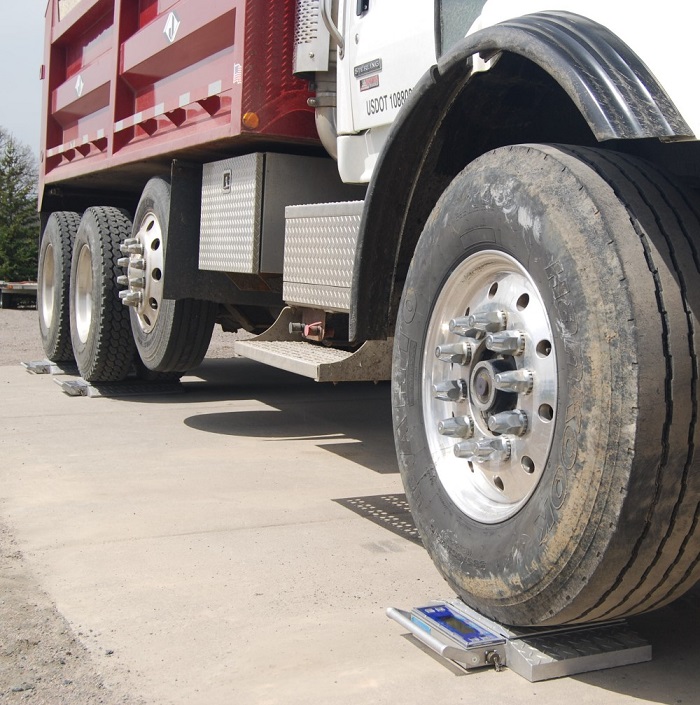Navigating axle weight Ohio regulations is crucial for every driver on the Turnpike to ensure smooth, legal, and efficient runs. Ohio enforces strict limits on axle weight to protect roadways and bridges, applying the federal bridge formula to determine maximum allowable weights for axle groups. Whether you’re managing a steer axle, tandem slide, or multiple axle groups, understanding these limits helps avoid costly overweight tickets and delays at toll booths.
For Turnpike trucking operations, compliance isn’t just about avoiding fines — it’s about maintaining safety, minimizing wear and tear, and optimizing load distribution. The challenge lies in balancing gross weight while adhering to specific axle weight restrictions, especially when considering the unique dynamics of tandem slide adjustments.
This article will guide you through key strategies for balancing load weights, ensuring your axle configurations meet Ohio’s requirements, and keeping your Turnpike runs compliant and cost-effective. Mastering these regulations is essential for every fleet aiming to maximize efficiency and avoid penalties on Ohio’s busy highways.
2. Understanding steer axle and gross weight limits
In Ohio, strict axle weight limits apply to the steer axle to ensure road safety and infrastructure longevity. The steer axle typically has the lowest weight threshold, often capped at 12,000 pounds, making it a critical factor in load planning. Beyond individual axles, the gross weight — total weight across all axle groups — must comply with the federal bridge formula, which governs maximum allowable weights based on axle spacing. For Turnpike trucking operations, balancing the load to prevent overweight tickets at toll booths means carefully managing both the steer axle and the entire axle group configuration. Utilizing tandem slide adjustments can help redistribute weights, achieving compliance with Ohio’s axle weight regulations and avoiding costly penalties while maintaining optimal vehicle performance.
3. The importance of the bridge formula in Turnpike trucking
The bridge formula is a cornerstone of axle weight Ohio regulations, playing a vital role in Turnpike trucking compliance. This formula calculates the maximum allowable gross weight based on the spacing and number of axles in an axle group, ensuring that weight is distributed safely across the vehicle and roadway structures. Without adherence to the bridge formula, trucks risk overweight tickets, costly fines, and delays at toll booths along the Ohio Turnpike.
For drivers using tandem slide configurations, understanding how the bridge formula affects axle group limits is essential. Adjusting axle spacing can optimize load distribution, helping maintain steer axle and tandem axle weights within legal limits. Properly applying the bridge formula not only prevents overweight violations but also extends the lifespan of roadways and bridges by reducing concentrated stress.
In essence, mastering the bridge formula empowers Turnpike trucking operators to balance gross weight efficiently, avoid penalties, and ensure safer, more reliable runs on Ohio’s highways. Compliance with this regulation is a critical step toward operational excellence and cost-effective fleet management — and the perfect moment tostart your journey in regional dry van trucking.
4. Sliding tandems: mechanics and benefits
Sliding tandems are a vital tool in balancing axle weight Ohio regulations for Turnpike trucking compliance. Here’s how they work and why they matter:
- Adjustable Axle Spacing: Sliding tandems allow drivers to change the distance between axles within a tandem axle group, influencing weight distribution.
- Optimized Load Balance: By shifting axle positions, operators can redistribute gross weight, reducing overload risks on steer axles and tandem groups.
- Bridge Formula Compliance: Adjusting spacing helps meet the bridge formula requirements, preventing overweight tickets at toll booths.
- Enhanced Safety and Efficiency: Proper use of tandem slide improves vehicle stability and minimizes road wear, promoting safer Turnpike runs.
- Cost Savings: Avoiding fines and delays by maintaining axle weight compliance lowers operational costs and downtime.
Mastering sliding tandems empowers trucking fleets to stay compliant, protect infrastructure, and maximize load capacity on Ohio’s Turnpike.
5. Common causes of overweight tickets at toll booths
Overweight tickets on the Ohio Turnpike often stem from several recurring issues affecting axle weight Ohio compliance:
- Improper Load Distribution: Uneven cargo placement leads to excessive weight on steer axles or specific axle groups.
- Neglecting Tandem Slide Adjustments: Failing to reposition sliding tandems can cause axle groups to exceed bridge formula limits.
- Ignoring Gross Weight Limits: Exceeding total vehicle weight without balancing axle loads triggers violations.
- Inaccurate Weight Measurements: Using outdated or uncalibrated scales results in misjudged compliance before toll booths.
- Overlooking Regulatory Updates: Not staying current with Ohio’s axle weight rules can cause unintentional non-compliance.
Addressing these causes through strategic load balancing and tandem slide use is key to avoiding costly overweight tickets and ensuring smooth Turnpike trucking operations.
6. Strategies for balancing load weights for axle compliance
Achieving axle weight Ohio compliance requires strategic load balancing tailored to Turnpike trucking dynamics. Start by accurately measuring your vehicle’s gross weight and axle group distribution using calibrated scales before departure. Proper cargo placement is crucial — position heavier items closer to the steer axle to prevent overload while ensuring tandem axle weights remain within limits.
Utilize the tandem slide feature effectively by adjusting axle spacing to optimize weight distribution. Sliding the tandems forward or backward helps comply with the bridge formula and reduces the risk of overweight tickets at toll booths. Regularly monitor weight shifts during loading and after adjustments to maintain balance across all axles.
Incorporate pre-trip weight checks and invest in driver training focused on load management and tandem slide operation. These proactive steps minimize errors, enhance safety, and ensure compliance with Ohio’s strict axle weight regulations. By combining precise load placement, diligent tandem slide use, and thorough monitoring, fleets can avoid costly penalties and maximize efficiency on the Ohio Turnpike.
7. Avoiding ODOT fines through proper axle group management
Effective axle group management is essential for avoiding costly ODOT fines on Ohio Turnpike runs. Ensuring axle weight Ohio compliance means carefully balancing both individual axle loads and the gross weight across your vehicle’s configurations. A common mistake is neglecting the critical role of tandem slide adjustments, which can significantly influence the distribution within axle groups.
Proper use of the tandem slide allows drivers to adjust axle spacing, optimizing weight placements to comply with the bridge formula and avoid overweight tickets at toll booths. Monitoring steer axle weights is equally important, as exceeding limits here often triggers fines. Regular pre-trip weigh-ins and load inspections help identify imbalances before departure, reducing the risk of violations.
In Turnpike trucking operations, maintaining detailed records of weight measurements and adjustments supports accountability and streamlines compliance. Training drivers on the nuances of axle group dynamics — including how shifts in load or tandem slide position affect compliance — further minimizes errors.
By proactively managing axle groups with precision and leveraging sliding tandems effectively, fleets can avoid ODOT fines, ensure safer runs, and keep operations running smoothly on Ohio’s busy Turnpike corridors.
8. Conclusion: Ensuring compliance and efficiency on Ohio Turnpike runs
Balancing load weights for axle compliance on Ohio Turnpike runs is crucial for avoiding costly fines, ensuring road safety, and maintaining operational efficiency. Throughout this guide, we explored the importance of understanding Ohio’s specific axle weight limits and how improper weight distribution can lead to overweight violations. Implementing strategic load planning, utilizing advanced weighing technologies, and regularly monitoring axle loads ensure trucks meet regulatory standards. Additionally, adopting best practices such as load shifting, cargo securing, and pre-trip inspections minimizes risk and enhances fleet performance. By prioritizing axle compliance, carriers not only protect their investments but also contribute to safer highways and smoother logistics operations. Ultimately, mastering load balancing on Ohio Turnpike routes enables trucking companies to reduce downtime, prevent damage, and achieve seamless, cost-effective transportation — key factors for competitive advantage in today’s freight industry. Stay proactive, leverage the right tools, and continuously adapt to regulatory changes to maximize compliance and efficiency on every Ohio Turnpike run.
FAQ
FAQ: Balancing Load Weights for Axle Compliance on Ohio Turnpike Runs
- 1. Why is balancing load weights important for axle compliance on the Ohio Turnpike?
- Properly balanced load weights ensure that each axle adheres to the legal weight limits, preventing fines and reducing wear on the roadway. It also promotes vehicle safety and stability during transit.
- 2. What are the maximum axle weight limits on the Ohio Turnpike?
- The Ohio Turnpike follows federal and state regulations, typically limiting single axles to 20,000 pounds, tandem axles to 34,000 pounds, and gross vehicle weight to 80,000 pounds. Always verify current limits before travel.
- 3. How can drivers effectively balance loads to meet axle compliance?
- Drivers should distribute cargo evenly across the trailer, use load distribution equipment if necessary, and perform weigh-ins at certified scales to ensure axle weights comply with regulations.
- 4. What are the consequences of non-compliance with axle weight limits on the Ohio Turnpike?
- Overweight axles can lead to hefty fines, mandatory offloading or redistribution of cargo, and increased risk of vehicle damage or accidents.
- 5. Are there tools or technologies that assist with load balancing for axle compliance?
- Yes, devices such as portable axle scales, onboard weighing systems, and load monitoring software help drivers and fleet managers ensure proper load distribution before and during trips.
Call to Action
Ensure your fleet meets Ohio Turnpike standards with ease—read the full article now or contact us today for expert guidance on load weight compliance!










Leave a Reply
View Comments